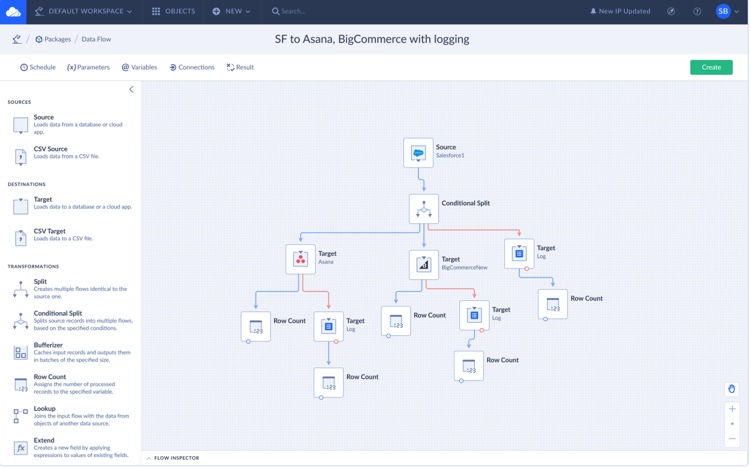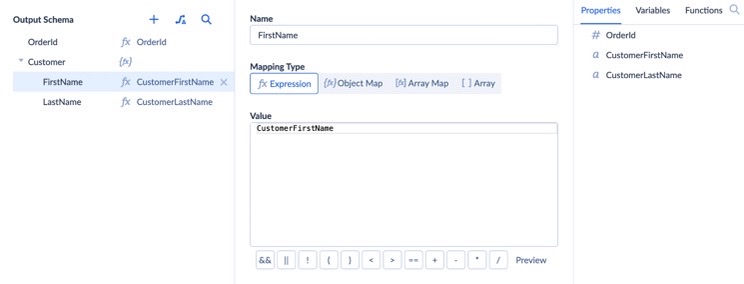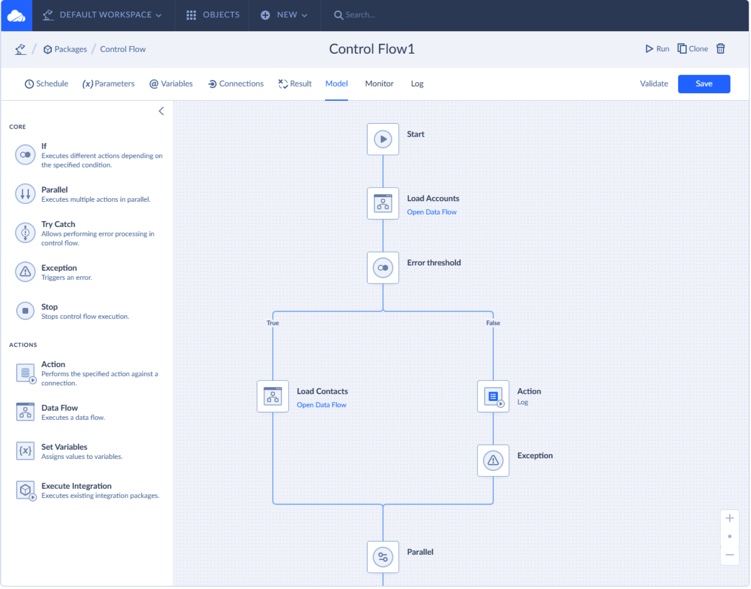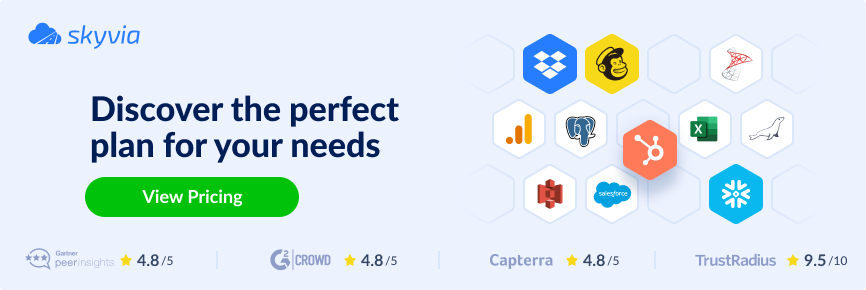We live in the AI era, starting each day with many questions, like ChartGPT, tell me, please, what is this, how to do that, is it possible to solve something else, etc., and receiving answers: “Certainly! I can help you. Look…”
Sure, someone likes it, someone is afraid; Hollywood, for decades, created scary movies about horrible AI trying to kill our planet. But as usual, the truth is that people often fear something new.
At the same time, businesses must remain competitive, requiring a new driving force to improve operational efficiency, automate processes, and increase customer satisfaction. Emerging AI technologies are this kind of magic:
- McKinsey predicts that generative AI may contribute from $2.6 trillion to $4.4 trillion to the annual economy.
- Forrester says that 85% of enterprises will use open-source AI models by 2025.
- According to Gartner’s top 10 strategic technology trends for 2024, implementing Trust, Risk, and Security Management (TRiSM) may eliminate 80% of faulty and illegitimate information and raise decision-making to a new level.
- Forbes says that 2023 had become a year when generative AI revolutionized data management.
In this article, we’ll explore how emerging AI impacts data integration and how it may benefit modern businesses.
Table of Contents
- Applications of AI in Data Management and Integration
- Benefits of AI
- Challenges and Considerations
- Skyvia’s Role in AI-Driven Data Integration
- Conclusion
Applications of AI in Data Management and Integration
According to Gartner‘s recent research, global software buying trends in 2024 are about increasing technology investment (61% of businesses) and considering AI-powered software (92%). The selection criteria for the perfect tool are its price (49%) and security compliance (48%).
These statistics say the world is ready to change its approaches and try something new. So, let’s dive a bit deeper and see specific areas within data management and integration where AI is applied, including functions and business impact.
| Area | Function | Impact |
|---|---|---|
| Automated Data Cleansing | AI algorithms can automatically detect and rectify inaccuracies, inconsistencies, or missing values in datasets. They identify duplicate records, correct typographical errors, and fill in gaps where data might be missing. | This automation: – Ensures that datasets are accurate and reliable for analytics and decision-making processes. – Reduces the manual labor typically associated with data cleaning, making the process more efficient and less prone to human error. |
| Integration Process Automation | AI facilitates the seamless merging of disparate data sources, automating the recognition and reconciliation of differences in data formats, schemas, and structures. It can handle complex mappings and transformations, simplifying and integrating varied data into a coherent whole. | The integration process automation: – Accelerates data consolidation from various sources, improving businesses’ agility in using their data for analytics, reporting, and operational purposes, enabling a more dynamic and flexible data infrastructure. |
| Predictive Analytics | AI analyzes historical data through machine learning models to identify patterns and predict future trends or outcomes. These models can be applied to various business activities, from forecasting customer behavior to anticipating market shifts. | Predictive analytics allows businesses to: – Make proactive decisions. – Optimize operations. – Enhance customer experiences. By anticipating future trends, companies can devise strategies that capitalize on opportunities and decrease potential risks. |
| Real-time Data Processing | AI technologies are particularly adept at processing and analyzing real-time data streams. This capability allows for the immediate analysis of incoming data, like transactions, social media feeds, or sensor outputs, to identify trends, anomalies, or opportunities as they happen. | Real-time data processing allows: – The ability to react promptly to critical information. – Adjust strategies on the fly. – Provide timely customer responses. This agility is crucial in fast-paced environments where delays can lead to missed opportunities or escalated problems. |
| Enhanced Data Security and Compliance | AI-driven security systems can monitor data access patterns and anomalies to identify potential security threats or breaches. AI can aid in classifying sensitive data and ensuring compliance with data protection regulations by automating the enforcement of governance policies. | Implementing AI in data security: – Helps companies to protect sensitive information and respond to threats quickly. – Ensures compliance with increasingly complex regulatory environments, reducing the risk of legal penalties and reputational damage. |
Benefits of AI
40% of the last McKinsey annual Global Survey respondents are ready to invest in AI because of mitigating the inaccuracy risks. But that’s just one reason why implicating AI into data handling is a good idea. So, how can AI solutions benefit data integration platforms and their users?
Data Quality Improvement
- AI algorithms automatically clean and verify data.
- They identify and correct errors, remove duplicates, and enrich data sets.
- The result is more reliable data that can be trusted for analysis and decision-making.
Example
Banks and financial companies use AI to automatically cleanse and reconcile transaction data from multiple sources, reducing customer account errors and improving financial reporting accuracy. Watch a real-life example with the NISO’s Data Integration Breakthrough case study:
Integration Processes Acceleration
- AI automates data recognition and reconciliation from disparate sources.
- It eliminates the bottlenecks associated with manual data mapping and transformation.
- AI allows real-time or near-real-time data integration.
Example
Online retailers use AI to quickly integrate customer data from various touchpoints, like websites, mobile apps, customer service, etc., to create a unified view of the customer, enhancing personalized marketing and customer service.
Manual Labor Reduce
- AI automates routines like repetitive data management tasks, freeing human resources for more complex and strategic activities.
- This practice reduces the time and cost associated with data management tasks and minimizes human error.
Example
Hospitals and healthcare providers use AI to automate patient data integration from various systems, including EMR, lab systems, billing, and more, into a single patient record, reducing administrative overhead and improving patient care. Here’s how Skyvia’s data ETL pipeline designer may help in such tasks.
Enhanced Decision-Making
- AI-driven data integration tools allow access to cleaner, more comprehensive data sets enriched with insights derived from AI’s predictive analytics and pattern recognition capabilities.
- Such solutions empower decision-makers with actionable intelligence, facilitating more informed, data-driven decisions.
Example
Manufacturers integrate AI with their data systems to predict machine failures and maintenance needs, enhancing operational efficiency and reducing downtime through predictive maintenance strategies.
Scalability and Flexibility
- AI technologies can handle increasing volumes and varieties of data without a proportional cost increase.
- This scalability ensures that businesses can adapt to changing data needs and capitalize on new opportunities without being constrained by their data infrastructure.
Example
Startups often use AI tools to quickly scale their data infrastructure as they grow to handle increasing volumes of data without raising costs or complexity.
Real-Time Insights
- AI allows for processing and analyzing data in real-time, enabling immediate insights into operations, customer behavior, and market trends.
- This real-time analysis supports agile decision-making and helps businesses respond proactively to emerging challenges and opportunities.
Example
Retailers use AI to analyze sales, inventory, and customer data in real time, allowing for dynamic pricing, optimized inventory management, and personalized marketing campaigns that respond quickly to changing market scenarios.
Enhanced Security and Compliance
- AI algorithms can monitor data transactions and access patterns to identify potential security threats, unauthorized access, or compliance violations.
- By automating data governance and compliance processes, AI helps ensure that data management practices meet regulatory standards and protect sensitive information effectively.
Example
Banks employ AI to monitor transactions in real time for signs of fraudulent activity, improving security and compliance with financial regulations by identifying and addressing issues as they arise.
Cost Efficiency
- By automating data integration and management tasks, AI helps reduce operational costs used for manual data handling and correction.
- This cost efficiency extends to better resource allocation, as staff can focus on higher-value tasks that contribute more directly to business goals.
Example
Logistics companies integrate AI into their data management systems to optimize routes and deliveries based on real-time data, reducing fuel costs and improving delivery times through more efficient operations.
Challenges and Considerations
AI implementation in the data integration area may bring many benefits to businesses. The challenges it brings are another side of the coin. So, let’s walk through the issues companies must navigate carefully.
Data Privacy and Security Concerns
AI systems often require access to vast amounts of data, some of which can be sensitive or personal. That causes privacy concerns, especially under strict data protection regulations like GDPR in Europe or CCPA in the US. Ensuring that AI solutions comply with these regulations without compromising the utility of the data they process is a delicate balance.
Solution
Implement robust data governance frameworks and use AI models trained with anonymized data to ensure compliance and protect individual privacy.
Data Quality and Quantity
AI and ML models require large, high-quality datasets for training to ensure accuracy and reliability. Poor data quality or insufficient data can lead to biased or inaccurate models, undermining AI’s effectiveness in data integration.
Solution
Implement comprehensive data cleaning, validation, and augmentation strategies to improve data quality. Techniques like data augmentation or synthetic data generation can be helpful in cases of insufficient data.
Complexity of AI Models
AI models, especially deep learning networks, can be incredibly complex, making them difficult to understand and interpret. AI’s “black box” nature can be an issue in industries where explainability and transparency are critical, such as healthcare and finance.
Solution
Use explainable AI (XAI) techniques and tools that provide insights into how AI models make decisions, improving transparency and trust.
Need for Skilled Personnel
The development, deployment, and maintenance of AI-driven data integration systems require a workforce with unique skills, including expertise in AI, machine learning, data science, and domain-specific knowledge.
Solution
Invest in training and development programs to upskill existing staff and collaborate with academic institutions to ensure a steady pipeline of skilled graduates. Companies may also consider leveraging managed services or consultancy firms specializing in AI-driven data integration.
Integration with Existing Systems
Integrating AI into existing data management and integration infrastructure is challenging, especially when discussing legacy systems. They don’t interact with AI technologies, leading to potential compatibility and performance issues.
Solution
Adopt a phased approach to integration, starting with pilot projects to identify and address potential issues. Use APIs and middleware data integration solutions like Skyvia, as bridges between AI technologies and existing systems.
Cost Considerations
Implementing AI in data integration is often about upfront costs, including technology, personnel, and training investments. For small to medium companies, these costs can be prohibitive.
Solution
Select cost-effective AI solutions offering scalable cloud-based AI services, allowing you to pay for usage only. Prioritize projects with clear ROI to justify the investment.
Skyvia’s Role in AI-Driven Data Integration
As mentioned, data integration with existing data ecosystems, especially legacy, can cause trouble for many businesses. Skyvia is the platform that helps solve this. It’s a good choice for companies looking for a universal ETL, ELT, and reverse ETL cloud-based data integration platform that’s easy to use, doesn’t need coding or specific AI skills, and provides a set of capabilities for an honest price.
Skyvia’s data integration tools fit businesses of any size, from startups to enterprises, and help navigate the challenges of implicating AI into data integration.
Here’s how Skyvia addresses common challenges in this area:
Data Flow Automation

Data flow automation allows users with minimal tech background to easily set up and manage data pipelines. It enables the seamless flow of data between sources and destinations, which is essential for training AI models and performing analytics.
- Capability: Skyvia offers users 180+ connectors for popular data sources and destinations, including CRM systems, cloud storage, and databases, facilitating the automation of data workflows with just a few clicks and providing flexibility to adapt to new data sources and destinations as businesses evolve and adopt new technologies.
Ensuring Data Accuracy

Data accuracy is the backbone of AI-driven systems because the output quality depends heavily on the input data quality. Skyvia offers data validation and cleansing tools as part of the integration process.
- Capability: The platform includes features for data quality management, allowing users to define rules for data validation and employ transformations to clean data before it enters the AI models. So, the data used for AI and analytics is reliable and high-quality.
Simplifying Complex Data Integration Tasks

One of the most common hurdles in AI-driven data integration is the complexity of integration tasks, which often require strong coding skills. Skyvia’s environment is code-free and simplifies complex tasks through a graphical interface.
- Capability: Users can create, manage, and modify data integration tasks using a drag-and-drop interface, which makes it easier for companies to integrate AI into their data strategies without needing dedicated specialists.
Conclusion
AI isn’t our future; it has become our today. Businesses aiming to be competitive in any area cannot ignore it. The mix of AI capabilities and data integration practices and approaches guarantees that your AI models have the most accurate and timely data for analysis and learning. You don’t need to invent the things that have already been invented and may focus on new challenges to ensure your business is going the right way.


